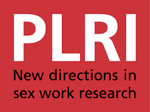In settings with poor sexually transmitted infection (STI) control in high-risk groups, periodic presumptive treatment (PPT) can quickly reduce the prevalence of genital ulcers, Neisseria gonorrhoeae (NG) and Chlamydia trachomatis (CT). However, few studies have assessed the impact on HIV. Mathematical modelling is used to quantify the likely HIV impact of different PPT interventions.
METHODS:
A mathematical model was developed to project the impact of PPT on STI/HIV transmission amongst a homogeneous population of female sex workers (FSWs) and their clients. Using data from Johannesburg, the impact of PPT interventions with different coverages and PPT frequencies was estimated. A sensitivity analysis explored how the projections were affected by different model parameters or if the intervention was undertaken elsewhere.
RESULTS:
Substantial decreases in NG/CT prevalence are achieved among FSWs receiving PPT. Although less impact is achieved among all FSWs, large decreases in NG/CT prevalence (>50%) are possible with >30% coverage and supplying PPT every month. Higher PPT frequencies achieve little additional impact, whereas improving coverage increases impact until NG/CT becomes negligible. The impact on HIV incidence is smaller, longer to achieve, and depends heavily on the assumed NG/CT cofactors, whether they are additive, the assumed STI/HIV transmission probabilities and STI durations. Greater HIV impact can be achieved in settings with lower sexual activity (except at high coverage), less STI treatment or high prevalences of Haemophilus ducreyi.
CONCLUSIONS:
Despite the model’s assumption of homogeneous risk behaviour probably resulting in optimistic projections, and uncertainty in STI cofactors and transmission probabilities, projections suggest PPT interventions with sufficient coverage (> or = 40%) and follow-up (> or = 2 years) could noticeably decrease the HIV incidence (>20%) among FSW populations with inadequate STI treatment.
Author:
Richard Steen and others

